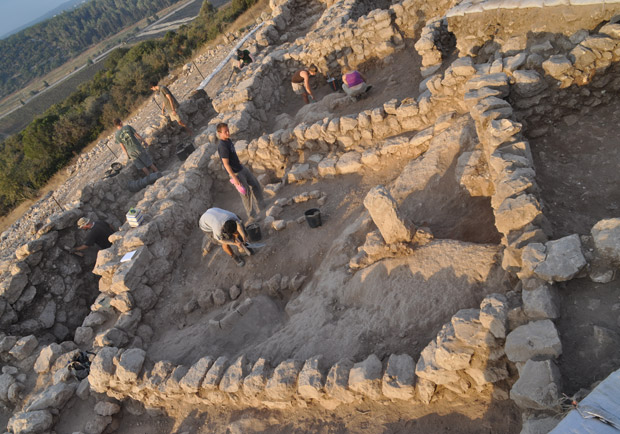Two small portable shrines are giving Bible scholars new clues about Israelite religious practices during the time of David and Solomon. They also indicate a pendulum swing in the world of biblical archaeology.
Hebrew University archaeologist Yosef Garfinkel showcased the shrines at a news conference in May. They were discovered during last summer’s excavations at Khirbet Qeiyafa, a ruin overlooking Israel’s Elah Valley dated to 1020-980 B.C.
The Elah Valley was where David brought down the giant Goliath, signaling the beginning of the end of Philistine hegemony over the Israelites. Similarly, the discoveries at Khirbet Qeiyafa herald the diminishing influence of minimalist Bible critics who have discounted the importance of the biblical kings.
John Monson, an archaeologist at Trinity Evangelical Divinity School, is excavating at Khirbet Qeiyafa this summer. He believes Garfinkel’s excavations are revealing a fortress built to defend one of the most important routes between the Israelites in the Judean hills and the Philistines on the coastal plain.
“This is a front-row seat to what transpired in that ebb and flow between Israel and the Philistines, as we see it recorded in 1 and 2 Samuel,” he said.
Archaeologists have been arguing for decades over whether David and Solomon had the kingly stature described in the Bible or were more like tribal chieftains. Garfinkel is helping clear up the dispute.
More archaeologists are now focusing on this border region. “I see a gold rush mentality now in the lowlands of Judah,” Monson said.
This summer, archaeologists are beginning a new excavation at nearby Azekah. Socoh, another site overlooking the Elah Valley, will open up soon. These will join ongoing excavations at nearby Tel Burna, Tel es-Safi (Gath), and Tel Zayit.
Steve Ortiz, professor of archaeology at Southwestern Baptist Theological Seminary, thinks Khirbet Qeiyafa may predate both David and Solomon. “As early as the time of King Saul,” he said. “[It] represents that change from a tribal society to one with centralized cooperation.”
Ortiz excavated with Garfinkel at Tel Mikne-Ekron, a Philistine site, and now co-directs excavations at Tel Gezer, another border site.
Both Ortiz and Monson note the lack of iconography on the two shrines and the absence of idols with them. That would seem to conform to Scripture’s admonition against graven images.
Also intrigued is Wheaton College archaeologist Daniel Master, who directs the ongoing excavations at Ashkelon, a coastal Philistine city.
“We will be trying to understand Garfinkel’s finds for some time to come,” Master said. “Since this period is not well understood in Judah, it is somewhat difficult to know how representative these finds are for the highlands as a whole.”










